A Dual-Band Carbon Dioxide Sensor Based on Metal–TiO2–Metal Metasurface Covered by Functional Material
Abstract
1. Introduction
2. Design and Simulation Method
3. Results and Discussion
3.1. Absorption Properties and Resonance Characterization
3.2. Sensing Performance
4. Discussion
5. Conclusions
Author Contributions
Funding
Institutional Review Board Statement
Informed Consent Statement
Data Availability Statement
Conflicts of Interest
References
- Zhao, P.; Zhao, Y.; Bao, H.; Ho, H.L.; Jin, W.; Fan, S.; Gao, S.; Wang, Y.; Wang, P. Mode-phase-difference photothermal spectroscopy for gas detection with an anti-resonant hollow-core optical fiber. Nat. Commun. 2020, 11, 847. [Google Scholar] [CrossRef]
- Pang, J.; Le, X.; Pang, K.; Dong, H.; Zhang, Q.; Xu, Z.; Gao, C.; Fu, Y.; Xie, J. Highly precision carbon dioxide acoustic wave sensor with minimized humidity interference. Sens. Actuators B Chem. 2021, 338, 129824. [Google Scholar] [CrossRef]
- Srinives, S.; Sarkar, T.; Hernandez, R.; Mulchandani, A. A miniature chemiresistor sensor for carbon dioxide. Anal. Chim. Acta 2015, 874, 54–58. [Google Scholar] [CrossRef] [PubMed]
- Dinh, T.-V.; Choi, I.-Y.; Son, Y.-S.; Kim, J.-C. A review on non-dispersive infrared gas sensors: Improvement of sensor detection limit and interference correction. Sens. Actuators B Chem. 2016, 231, 529–538. [Google Scholar] [CrossRef]
- Pusch, A.; De Luca, A.; Oh, S.S.; Wuestner, S.; Roschuk, T.; Chen, Y.; Boual, S.; Ali, Z.; Phillips, C.C.; Hong, M.; et al. A highly efficient CMOS nanoplasmonic crystal enhanced slow-wave thermal emitter improves infrared gas-sensing devices. Sci. Rep. 2015, 5, 17451. [Google Scholar] [CrossRef] [PubMed]
- Romaniello, V.; Spinetti, C.; Silvestri, M.; Buongiorno, M.F. A Methodology for CO2 Retrieval Applied to Hyperspectral PRISMA Data. Remote Sens. 2021, 13, 4502. [Google Scholar] [CrossRef]
- Xia, X.; Zou, X. Development of CO2 Band-Based Cloud Emission and Scattering Indices and Their Applications to FY-3D Hyperspectral Infrared Atmospheric Sounder. Remote Sens. 2020, 12, 4171. [Google Scholar] [CrossRef]
- Wang, Y.; Landreman, P.; Schoen, D.; Okabe, K.; Marshall, A.; Celano, U.; Wong, H.-S.P.; Park, J.; Brongersma, M.L. Electrical tuning of phase-change antennas and metasurfaces. Nat. Nanotechnol. 2021, 16, 667–672. [Google Scholar] [CrossRef]
- Zhang, Y.; Liu, H.; Cheng, H.; Tian, J.; Chen, S. Multidimensional manipulation of wave fields based on artificial microstructures. Opto-Electron. Adv. 2020, 3, 200002. [Google Scholar] [CrossRef]
- Miyazaki, H.T.; Kasaya, T.; Iwanaga, M.; Choi, B.; Sugimoto, Y.; Sakoda, K. Dual-band infrared metasurface thermal emitter for CO2 sensing. Appl. Phys. Lett. 2014, 105, 121107. [Google Scholar] [CrossRef]
- Hasan, D.; Lee, C. Hybrid Metamaterial Absorber Platform for Sensing of CO2 Gas at Mid-IR. Adv. Sci. 2018, 5, 1700581. [Google Scholar] [CrossRef]
- Bareza, N.J.; Gopalan, K.K.; Alani, R.; Paulillo, B.; Pruneri, V. Mid-infrared Gas Sensing Using Graphene Plasmons Tuned by Reversible Chemical Doping. ACS Photon. 2020, 7, 879–884. [Google Scholar] [CrossRef]
- Pohl, T.; Sterl, F.; Strohfeldt, N.; Giessen, H. Optical Carbon Dioxide Detection in the Visible Down to the Single Digit ppm Range Using Plasmonic Perfect Absorbers. ACS Sens. 2020, 5, 2628–2635. [Google Scholar] [CrossRef]
- Zhou, Z.; Xu, Y.; Qiao, C.; Liu, L.; Jia, Y. A novel low-cost gas sensor for CO2 detection using polymer-coated fiber Bragg grating. Sens. Actuators B Chem. 2021, 332, 129482. [Google Scholar] [CrossRef]
- Mi, G.; Horvath, C.; Aktary, M.; Van, V. Silicon microring refractometric sensor for atmospheric CO2 gas monitoring. Opt. Express 2016, 24, 1773–1780. [Google Scholar] [CrossRef]
- Badri, S.H. Transmission resonances in silicon subwavelength grating slot waveguide with functional host material for sensing applications. Opt. Laser Technol. 2020, 136, 106776. [Google Scholar] [CrossRef]
- Li, H.; Sun, B.; Yuan, Y.; Yang, J. Guanidine derivative polymer coated microbubble resonator for high sensitivity detection of CO2 gas concentration. Opt. Express 2019, 27, 1991–2000. [Google Scholar] [CrossRef]
- Kazanskiy, N.L.; Butt, M.A.; Khonina, S.N. Carbon Dioxide Gas Sensor Based on Polyhexamethylene Biguanide Polymer Deposited on Silicon Nano-Cylinders Metasurface. Sensors 2021, 21, 378. [Google Scholar] [CrossRef]
- Yu, S.; Zhang, Z.; Li, M.; Xia, H. Multi-frequency differential absorption lidar incorporating a comb-referenced scanning laser for gas spectrum analysis. Opt. Express 2021, 29, 12984–12995. [Google Scholar] [CrossRef]
- Chen, K.; Adato, R.; Altug, H. Dual-Band Perfect Absorber for Multispectral Plasmon-Enhanced Infrared Spectroscopy. ACS Nano 2012, 6, 7998–8006. [Google Scholar] [CrossRef]
- Zeng, C.; Lu, H.; Mao, D.; Du, Y.; Hua, H.; Zhao, W.; Zhao, J. Graphene-empowered dynamic metasurfaces and metadevices. Opto-Electron. Adv. 2022, 5, 200098. [Google Scholar] [CrossRef]
- Wu, Y.; Yang, W.; Fan, Y.; Song, Q.; Xiao, S. TiO2 metasurfaces: From visible planar photonics to photochemistry. Sci. Adv. 2019, 5, eaax0939. [Google Scholar] [CrossRef] [PubMed]
- Duffett, G.; Wirth, R.; Rayer, M.; Martins, E.; Krauss, T.F. Metal-insulator-metal nanoresonators—Strongly confined modes for high surface sensitivity. Nanophotonics 2020, 9, 1547–1552. [Google Scholar] [CrossRef]
- Yang, J.; Sauvan, C.; Jouanin, A.; Collin, S.; Pelouard, J.-L.; Lalanne, P. Ultrasmall metal-insulator-metal nanoresonators: Impact of slow-wave effects on the quality factor. Opt. Express 2012, 20, 16880–16891. [Google Scholar] [CrossRef][Green Version]
- Abbas, M.A.; Zubair, A.; Riaz, K.; Huang, W.; Teng, J.; Mehmood, M.Q.; Zubair, M. Engineering multimodal dielectric resonance of TiO2 based nanostructures for high-performance refractive index sensing applications. Opt. Express 2020, 28, 23509–23522. [Google Scholar] [CrossRef]
- Johnson, P.B.; Christy, R.W. Optical Constants of the Noble Metals. Phys. Rev. B 1972, 6, 4370. [Google Scholar] [CrossRef]
- Carrara, A.; Maccaferri, N.; Cerea, A.; Bozzola, A.; De Angelis, F.; Proietti Zaccaria, R.; Toma, A. Plasmon hybridization in compressible metal–insulator–metal nanocavities: An optical approach for sensing deep sub-wavelength deformation. Adv. Opt. Mater. 2020, 8, 2000609. [Google Scholar] [CrossRef]
- Koushik, K.P.; Malathi, S. Optical micro-ring resonator for detection of carbon dioxide gas. In Emerging Trends in Photonics, Signal Processing and Communication Engineering; Springer Nature Singapore Pte Ltd.: Singapore, 2020; pp. 157–161. [Google Scholar]
- Ma, W.; Xing, J.; Wang, R.; Rong, Q.; Zhang, W.; Li, Y.; Zhang, J.; Qiao, X. Optical Fiber Fabry–Perot Interferometric CO2 Gas Sensor Using Guanidine Derivative Polymer Functionalized Layer. IEEE Sens. J. 2018, 18, 1924–1929. [Google Scholar] [CrossRef]
- Kong, Y.; Zhao, Z.; Wang, Y.; Yang, S.; Huang, G.; Wang, Y.; Liu, C.; You, C.; Tan, J.; Wang, C.; et al. Integration of a Metal–Organic Framework Film with a Tubular Whispering-Gallery-Mode Microcavity for Effective CO2 Sensing. ACS Appl. Mater. Interfaces 2021, 13, 58104–58113. [Google Scholar] [CrossRef]
- Yamada, H.; Kawasaki, D.; Sueyoshi, K.; Hisamoto, H.; Endo, T. Fabrication of Metal-Insulator-Metal Nanostructures Composed of Au-MgF2-Au and Its Potential in Responding to Two Different Factors in Sample Solutions Using Individual Plasmon Modes. Micromachines 2022, 13, 257. [Google Scholar] [CrossRef]
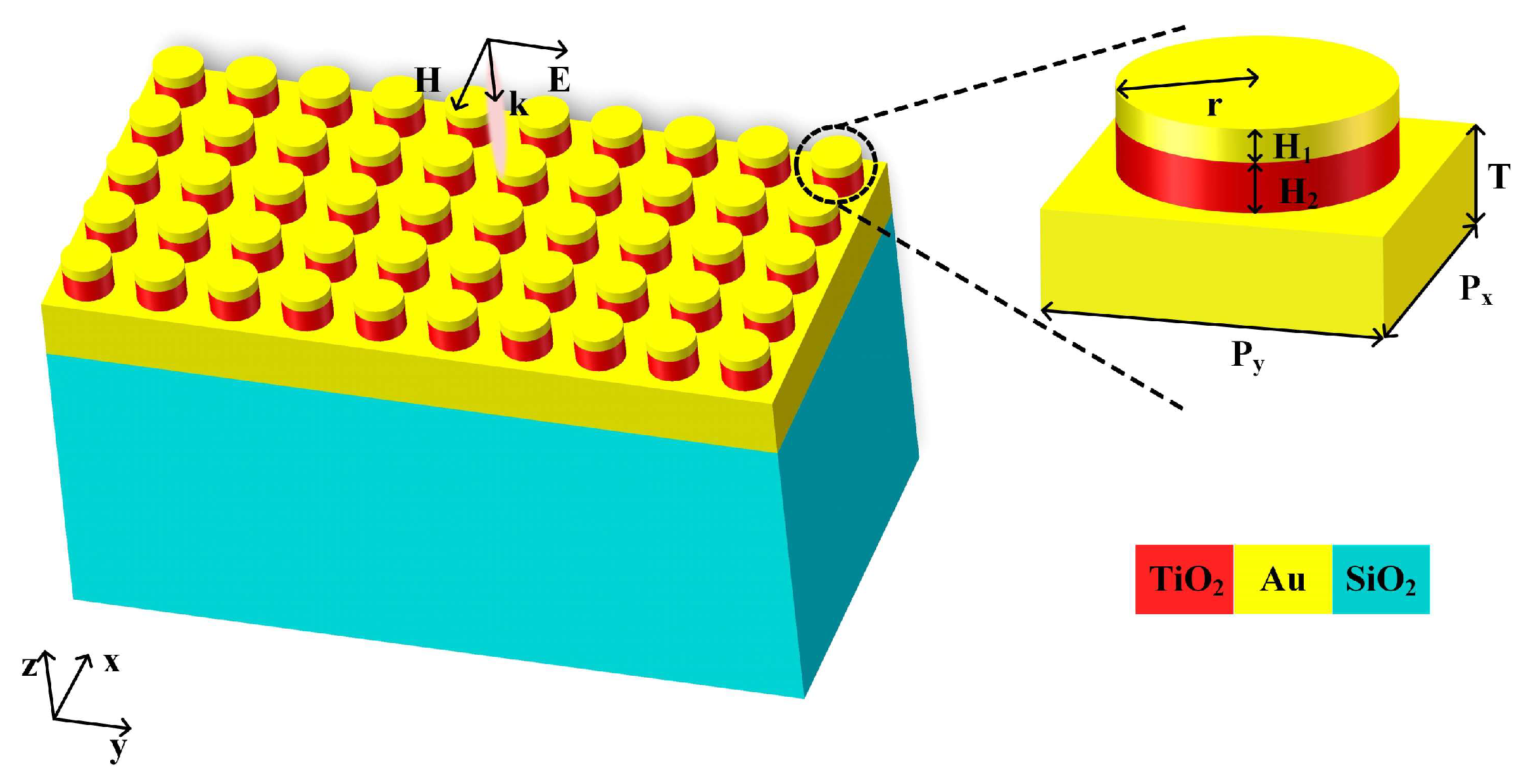

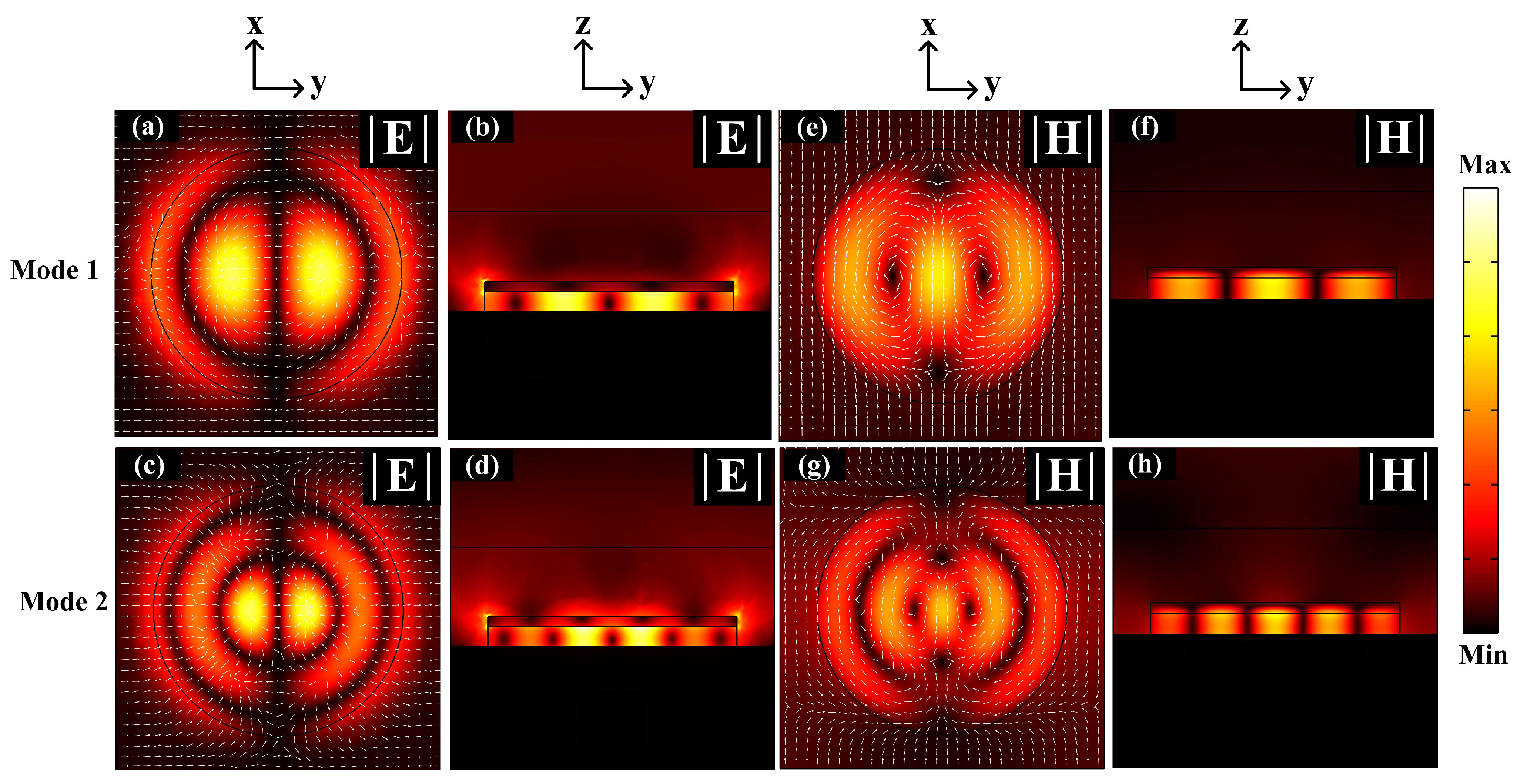
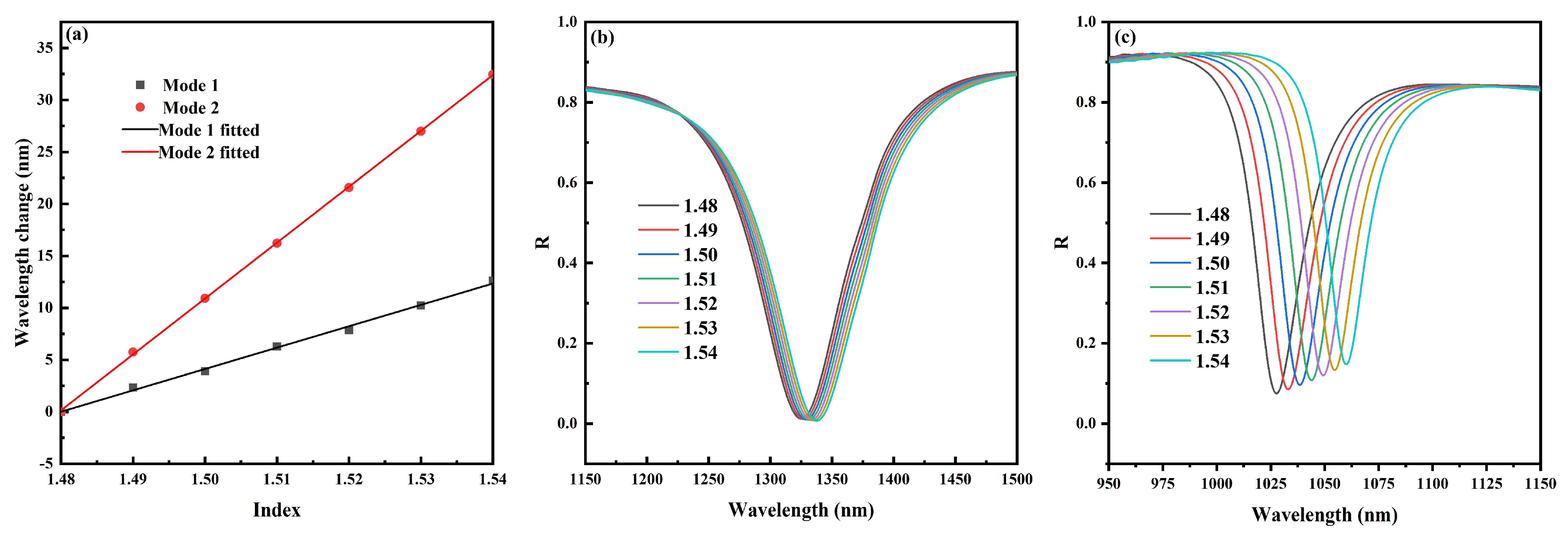
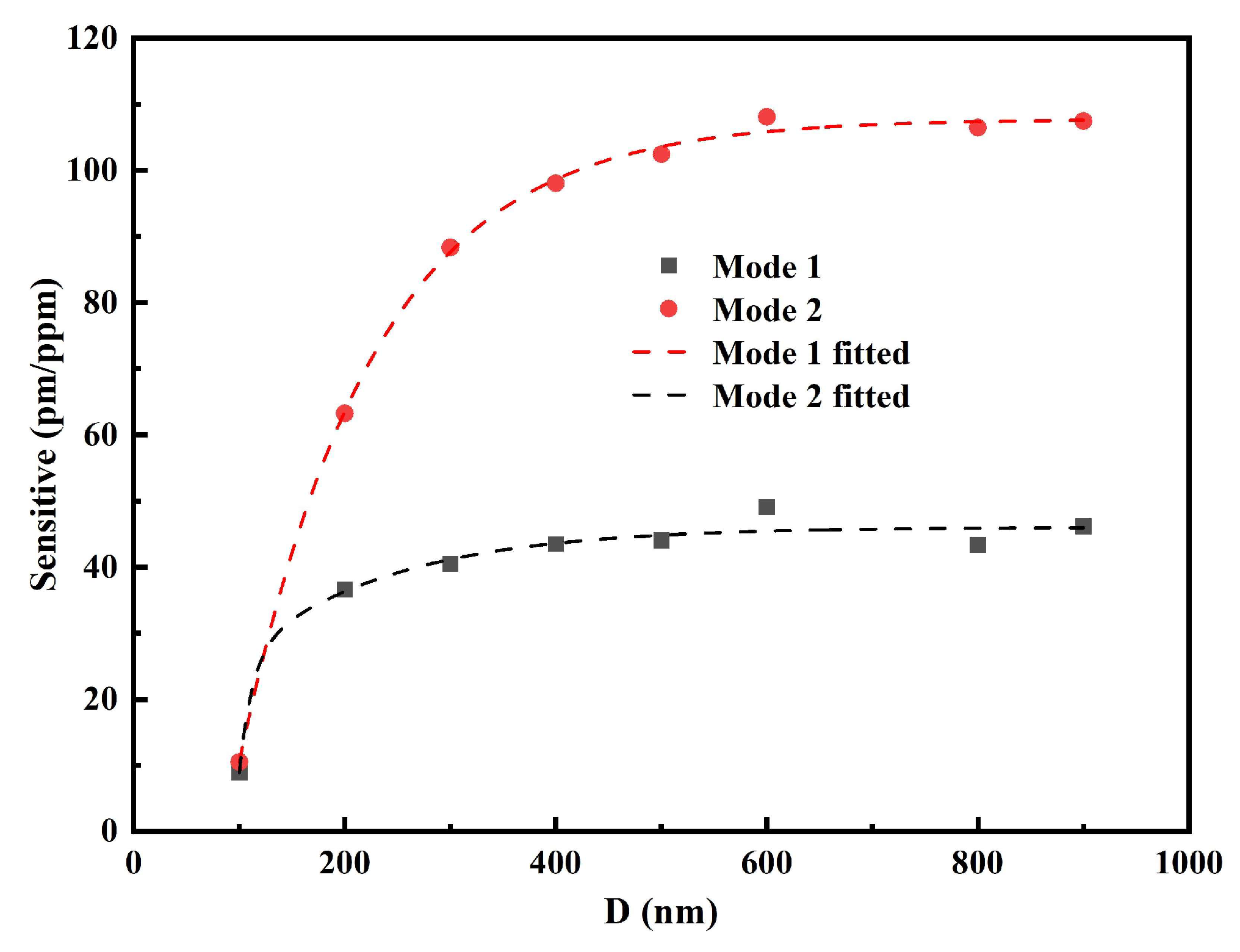
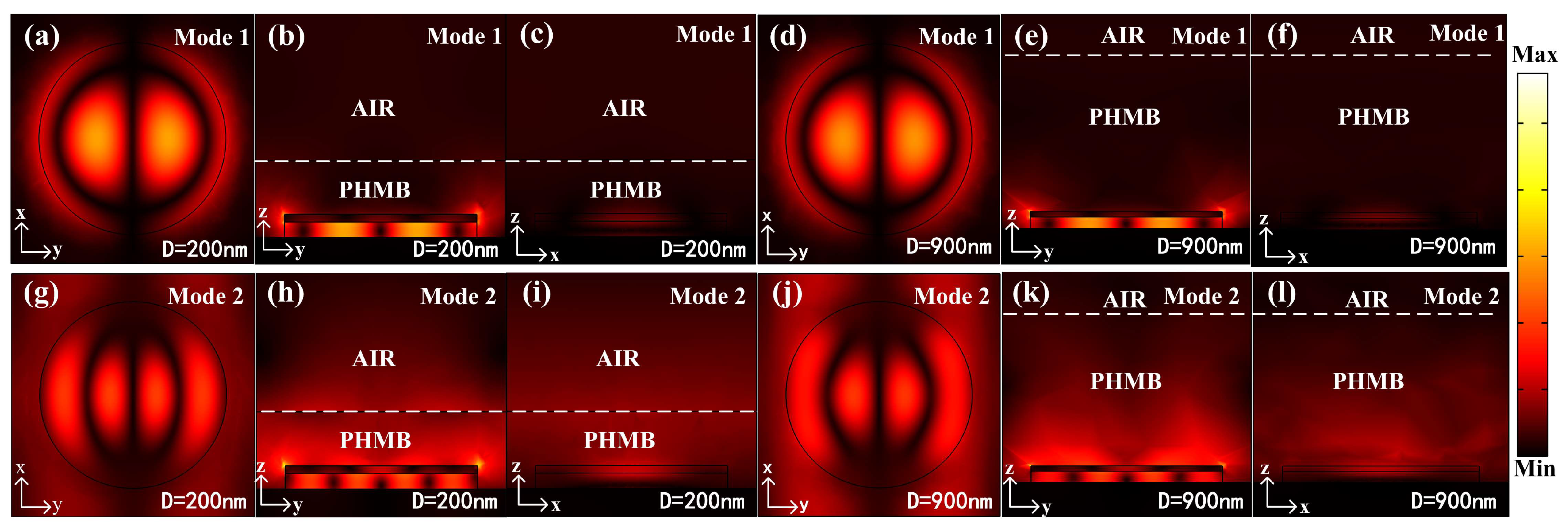
| Structure | Gas Trapping Layer | Sensitivity (pm/ppm) | Resonant Spectrum Region (nm) | Operation Type | Humidity Insensitive | Ref. | |
|---|---|---|---|---|---|---|---|
| Graphene-ribbon metasurface | Polyethylenimine | \ | 6300–6800 | Mid-inrfared | Transmission | No | [12] |
| Au-Al2O3-Au metasurface | Polyethylenimine | 3–8 | 600–700 | Visible | Reflection | No | [13] |
| Fiber Bragg grating | Polyether sulfone | 0.77 × 10−4 | \ | \ | Transmission | No | [14] |
| Silicon microring | PHMB | 3.5 × 10−3 | 1552.5–1552.6 | SWIR | Transmission | Yes | [15] |
| Grating slot | PHMB | 12.9 | 1540–1600 | SWIR | Transmission | Yes | [16] |
| Fiber microbubble | PHMB | 0.46 | 1531.7–1531.9 | SWIR | Transmission | Yes | [17] |
| Si-disk metasurface | PHMB | 17.3 | 910–990 | SWIR | Reflection | Yes | [18] |
| Fiber Fabry–Perot cavity | PHMB | 12.2 | 1560–1570 | SWIR | Reflection | Yes | [29] |
| Microtube | Zeolitic imidazolate framework-8 | 7.4 × 10−4 | 630–670 | Visible | Reflection | Yes | [30] |
| Au-TiO2-Au metasurface | PHMB | 42.57 | 1324.93–1337.55 | SWIR | Reflection | Yes | This paper |
| 109.25 | 1027.54–1060.01 | ||||||
Publisher’s Note: MDPI stays neutral with regard to jurisdictional claims in published maps and institutional affiliations. |
© 2022 by the authors. Licensee MDPI, Basel, Switzerland. This article is an open access article distributed under the terms and conditions of the Creative Commons Attribution (CC BY) license (https://creativecommons.org/licenses/by/4.0/).
Share and Cite
Long, W.; Zhou, R.; Du, Z.; Ling, Q.; Zhang, Y.; Zhao, D.; Shao, J.; Luo, S.; Chen, D. A Dual-Band Carbon Dioxide Sensor Based on Metal–TiO2–Metal Metasurface Covered by Functional Material. Photonics 2022, 9, 855. https://doi.org/10.3390/photonics9110855
Long W, Zhou R, Du Z, Ling Q, Zhang Y, Zhao D, Shao J, Luo S, Chen D. A Dual-Band Carbon Dioxide Sensor Based on Metal–TiO2–Metal Metasurface Covered by Functional Material. Photonics. 2022; 9(11):855. https://doi.org/10.3390/photonics9110855
Chicago/Turabian StyleLong, Wei, Rujun Zhou, Zixuan Du, Qiang Ling, Yusheng Zhang, Ding Zhao, Jie Shao, Si Luo, and Daru Chen. 2022. "A Dual-Band Carbon Dioxide Sensor Based on Metal–TiO2–Metal Metasurface Covered by Functional Material" Photonics 9, no. 11: 855. https://doi.org/10.3390/photonics9110855
APA StyleLong, W., Zhou, R., Du, Z., Ling, Q., Zhang, Y., Zhao, D., Shao, J., Luo, S., & Chen, D. (2022). A Dual-Band Carbon Dioxide Sensor Based on Metal–TiO2–Metal Metasurface Covered by Functional Material. Photonics, 9(11), 855. https://doi.org/10.3390/photonics9110855







